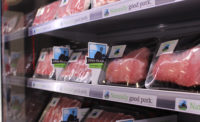Chick-fil-A announces commitment to using only No Antibiotics Ever chicken in all restaurants by 2019
Chick-fil-A seeks the USDA’s highest antibiotic-free designation—No Antibiotics Ever—for 100% of its chicken supply.

Chick-fil-A, Atlanta, announced plans to eliminate all antibiotic usage from its chicken supply by 2019.
Rather than simply sourcing available chicken raised without human antibiotics, Chick-fil-A seeks the USDA’s highest antibiotic-free designation—No Antibiotics Ever—for 100% of its chicken supply.
“It was new territory – no roadmap. We had to find a way to convert our entire supply chain,” says Steven Lyon, leader of the supply integrity team. “It required collaboration with our suppliers and the USDA.”
The move came in response to research conducted by Chick-fil-A, which revealed that 70% of consumers saw antibiotic use in meat as an issue that mattered to them, prompting the company to take swift action.
But, implementing a 100% antibiotic-free method of raising chicken could also have far-reaching implications.
“Not only is this good for customers, but it has the potential to positively impact the larger food system as well,” says Lyon.
Chick-fil-A serves only breast meat, but its new antibiotic-free farming practices apply to the full bird – providing suppliers the opportunity to offer No Antibiotics Ever dark meat to other venues, from restaurants to school cafeterias.
“Eliminating antibiotic usage sounds like a simple change, but there’s a lot involved. That’s why it is taking five years to complete. We want to think through every detail and do this right,” Lyon says. “For example, working with the USDA to create a verification program that ensures our suppliers meet our requirements.”
Animal husbandry performed with an eye toward eliminating antibiotics is nothing new, says David Rothmeier, who’s responsible for sourcing all of Chick-fil-A’s proteins. “But going fully No Antibiotics Ever is a paradigm shift for a fast-food restaurant,” he says.
“Not only is this good for customers, but it has the potential to positively impact the larger food system as well.”
In 2016, Chick-fil-A pledged to source only cage-free eggs within 10 years, and continues to take step in removing unwanted ingredients, such as trans-fats and artificial colors from its dressings and sauces, among other changes.
“The underlying basis for our decision is our customers. We’re always listening to what they care about,” Rothmeier says.
Looking for a reprint of this article?
From high-res PDFs to custom plaques, order your copy today!






